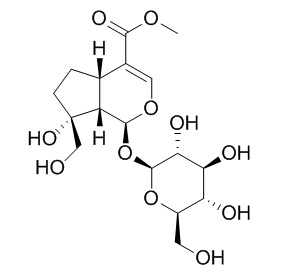Splendoside
Standard reference
Inquire / Order:
manager@chemfaces.com
Technical Inquiries:
service@chemfaces.com
Tel:
+86-27-84237783
Fax:
+86-27-84254680
Address:
1 Building, No. 83, CheCheng Rd., Wuhan Economic and Technological Development Zone, Wuhan, Hubei 430056, PRC
Providing storage is as stated on the product vial and the vial is kept tightly sealed, the product can be stored for up to
24 months(2-8C).
Wherever possible, you should prepare and use solutions on the same day. However, if you need to make up stock solutions in advance, we recommend that you store the solution as aliquots in tightly sealed vials at -20C. Generally, these will be useable for up to two weeks. Before use, and prior to opening the vial we recommend that you allow your product to equilibrate to room temperature for at least 1 hour.
Need more advice on solubility, usage and handling? Please email to: service@chemfaces.com
The packaging of the product may have turned upside down during transportation, resulting in the natural compounds adhering to the neck or cap of the vial. take the vial out of its packaging and gently shake to let the compounds fall to the bottom of the vial. for liquid products, centrifuge at 200-500 RPM to gather the liquid at the bottom of the vial. try to avoid loss or contamination during handling.
Nat Prod Sci.2016, 22(2)
Applied Biological Chemistry2020, 63:37.
J Ginseng Res.2022, 46(1):104-114.
Foods.2020, 9(10):1348.
Pharmaceuticals (Basel).2021, 14(3):260.
Heliyon.2024, 10(7):e28755.
J Asian Nat Prod Res.2019, 5:1-17
Sci Rep.2017, 7:467-479
Nat Prod Communications2018, 10.1177
Int J Mol Sci.2020, 21(19):7209.
Related and Featured Products
Planta Med 2015; 81 - PM_126
Constituents of the fruits of Vaccinium uliginosum (bog bilberry)[Reference:
WebLink]
As a part of our ongoing project to search novel secondary metabolites from medicinal plants, we chose the fruits of V. uliginosum for detailed phytochemical study.
METHODS AND RESULTS:
Repeated chromatography of freeze-dried extract of berries led to isolation of eleven compounds, comprising an anthocyanin, six flavonoids, two phenyl propanoids, and two iridoids. The isolates were identified as cyanidin-3-O-β-D-glucopyranoside (1), quercetin (2), hyperoside (quercetin-3-O-β-D-galactopyranoside) (3), quercetin-3-O-α-L-arabinopyranoside (4), myricetin (5), myricetin-3-O-β-D-galactopyranoside (6), syringetin-3-O-β-D-galactopyranoside (7), methylchlorogenate (8), chlorogenic acid (9), loganic acid (10), and 6,7-dihydromonotropein methyl ester (Splendoside) (11) by physical (mp, [α]D) and spectroscopic data (1H NMR, 13C NMR, 2D NMR, and MS) measurement and by comparison with published values.
CONCLUSIONS:
Although loganic acid (10) and 6,7-dihydromonotropein methyl ester (Splendoside) (11) were isolated from other Vaccinium species, they have not been reported from V. uliginosum to date.



